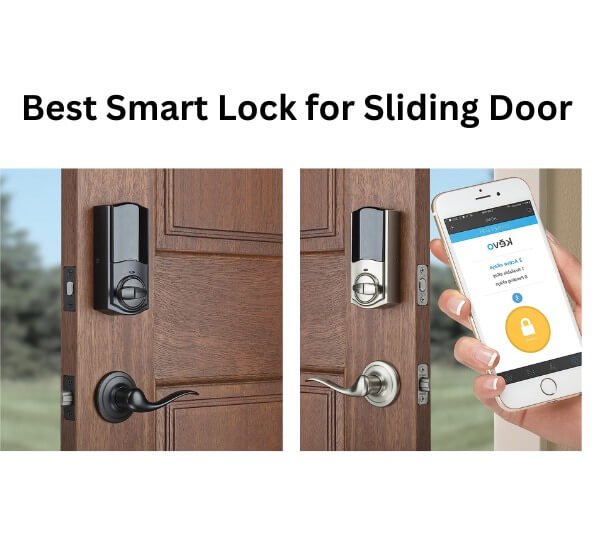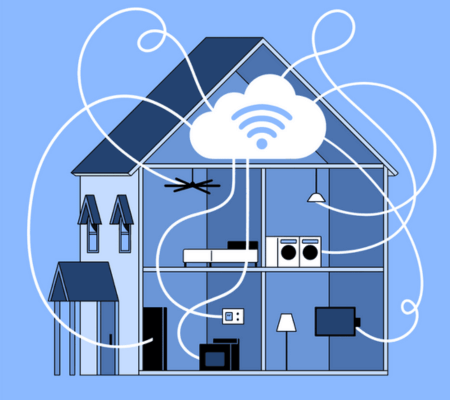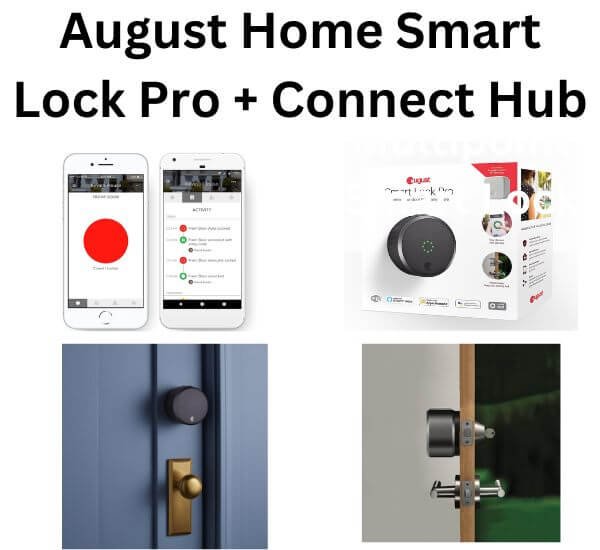Are you looking to enhance the security and convenience of your home? Smart lock for sliding door offers an innovative solution to safeguard your property while providing seamless access control. These cutting-edge devices combine advanced technology with the practicality of sliding doors, offering a range of benefits that prioritize both security and convenience.

In this article, we will introduce the concept of smart locks for sliding doors and highlight the advantages they bring in terms of bolstered security and enhanced convenience. Discover how these intelligent locks can transform your sliding doors into smart, connected entrances that give you peace of mind and simplify your daily life. Also read How to Turn Off Google Smart Lock and Manage Passwords: Unleashing Your Control.
Table of Contents
ToggleI . Features and Functionality
Smart locks for sliding doors offer an array of impressive features and functionalities that revolutionize home security and access control. Let’s delve into the primary features that make these locks stand out and explore how they enhance convenience and peace of mind.
Remote Access Control:
One of the key advantages of smart locks for sliding doors is the ability to control and monitor access remotely through a smartphone app.
Whether you’re at work, on vacation, or simply away from home, you can lock or unlock your sliding door with a tap on your smartphone. This feature provides added security, allowing you to grant access to trusted individuals or prevent unauthorized entry, all from the convenience of your mobile device.
Keyless Entry Methods:
Say goodbye to fumbling for keys or worrying about lost or duplicated copies. Smart locks for sliding doors offer keyless entry methods, such as keypad codes or biometric recognition.
With a secure keypad code or your unique fingerprint, you can effortlessly unlock your sliding door, eliminating the need for physical keys altogether. This feature enhances convenience and eliminates the risk of unauthorized key access.
Voice Assistant Compatibility:
Many smart locks for sliding doors integrate seamlessly with popular voice assistants like Amazon Alexa or Google Assistant. This compatibility enables hands-free operation, allowing you to lock or unlock your door with a simple voice command.
Imagine arriving home with your hands full and effortlessly instructing your voice assistant to open the sliding door for you. It’s a convenient and futuristic way to interact with your home security system.
Additional Features
Smart locks for sliding doors often offer additional features that further enhance security and convenience. Activity logs keep track of every lock or unlock event, allowing you to monitor access history.
Guest access management lets you easily grant temporary access to family members, friends, or service providers while maintaining control over their entry permissions. Alerts and notifications provide real-time updates on the status of your sliding door, ensuring you stay informed about any activity or potential security breaches.
II. Installation and Compatibility
Installing a smart lock for sliding doors is a straightforward process that can greatly enhance your home’s security and convenience. Understanding the installation process and compatibility with different sliding door types is crucial when considering this upgrade.
Let’s explore the steps involved in installing these locks and highlight any specific considerations, as well as discuss the compatibility with various sliding door types and any additional hardware or accessories that may be required.
Installation Process
Installing a smart lock for sliding doors typically involves the following steps:
a). Remove the existing lock: Start by removing the existing lock or latch mechanism from your sliding door. Follow the manufacturer’s instructions or consult a professional if needed.
b). Prepare the door: Ensure that the door surface is clean and free of debris or obstructions.
c). Attach the smart lock: Securely attach the smart lock mechanism to the designated area on the door. This may involve using screws, bolts, or other provided hardware.
d). Connect wiring (if applicable): Some smart locks require wiring for power or connectivity. Follow the manufacturer’s instructions to connect any necessary wires properly.
e). Install batteries: If the smart lock operates on batteries, insert them into the lock mechanism according to the instructions provided.
f). Test the lock: Once the lock is installed, test its functionality by locking and unlocking the door using the provided methods.
Compatibility with Sliding Door Types
Our selected best Smart locks for sliding doors are designed to be compatible with different types of sliding doors, such as patio doors or glass doors. Whether your sliding door is made of wood, metal, or glass, there are smart lock options available to suit your needs.
However, it’s important to verify compatibility with your specific sliding door type before making a purchase. Manufacturers typically provide information on compatibility, and it’s advisable to check their guidelines or consult with a professional if necessary.
Additional Hardware or Accessories
Depending on the smart lock model and your specific requirements, there may be additional hardware or accessories needed for installation.
For example:
a). Mounting plates or brackets: Some smart locks come with specific mounting plates or brackets to ensure a secure installation on sliding doors.
b). Adhesive strips: In certain cases, adhesive strips may be provided to affix the lock mechanism to the sliding door surface.
c). Wi-Fi or Bluetooth connectivity: If the smart lock requires wireless connectivity, ensure that your sliding door is within range of your home’s Wi-Fi network or that you have a compatible Bluetooth setup.
d). Bridge or hub: Certain smart locks may require an additional bridge or hub device to connect to your home’s network or integrate with other smart home systems. Check the manufacturer’s recommendations for compatibility and any required additional devices.
By following the installation process provided by the manufacturer and considering specific compatibility requirements for your sliding door type, you can successfully install a smart lock.
Don’t forget to check if any additional hardware or accessories are necessary for a seamless installation. Boost your home’s security and enjoy the convenience of keyless entry by adding a smart lock to your sliding doors.
III Security and Safety
When it comes to securing your home, smart locks for sliding doors offer a range of advanced security features that prioritize your safety. These innovative locks combine technology and robust construction to provide enhanced protection and peace of mind.
Let’s explore the security features of smart locks for sliding doors and discuss how they ensure the safety of your property and loved ones.
Encryption and Tamper Alerts
Smart locks for sliding doors prioritize your security by incorporating encryption protocols, such as advanced encryption standards (AES), to protect the communication between the lock and your smartphone or other connected devices.
This ensures that your data remains secure and safeguarded from unauthorized access. In addition, tamper alerts provide an extra layer of security by triggering notifications or alarms if any tampering or forced entry attempts are detected.
Remote Locking and Unlocking
The ability to remotely lock or unlock your sliding door is a valuable security feature offered by smart locks. In case of emergencies or if you’ve forgotten your keys, you can conveniently access your smartphone app or connected device to remotely control the lock.
This feature allows you to quickly secure your home from anywhere, providing peace of mind and minimizing potential vulnerabilities.
IV. Built-In Safety Features
Smart locks for sliding doors often come equipped with built-in safety features that further enhance the security of your home:
a). Auto-Locking: Some smart locks offer an auto-locking feature that automatically locks the sliding door after a specified period of time. This ensures that your door remains secure even if you forget to lock it manually.
b). Door Position Sensors: Door position sensors detect the status of your sliding door, allowing the lock to notify you if the door is left open or ajar. This feature is particularly useful for ensuring that your door is securely closed and locked, preventing unauthorized access.
c). Emergency Access: Many smart locks provide emergency access options, such as physical key overrides or backup power supply options, in case of unexpected situations like power outages or lock malfunctions.
By incorporating encryption and tamper alerts, offering remote locking and unlocking capabilities, and providing built-in safety features like auto-locking and door position sensors, smart locks for sliding doors prioritize your security and contribute to the overall safety of your home.
With these advanced features, you can enjoy enhanced protection and peace of mind, knowing that your sliding door is fortified against potential threats and vulnerabilities.
V. Integration with Smart Home Systems
Smart locks for sliding doors are not just standalone devices but can seamlessly integrate with popular smart home platforms, enhancing the overall functionality and convenience of your home security system.
Let’s explore the compatibility of smart locks for sliding doors with smart home platforms, how integration allows for centralized control and automation of security systems, and the potential integration with other smart devices.
Compatibility with Smart Home Platforms
Smart locks for sliding doors are designed to work with popular smart home platforms, such as Amazon Alexa, Google Assistant, or Apple HomeKit. This compatibility enables you to integrate your smart lock into your existing smart home ecosystem, allowing for centralized control and management of your security system.
Centralized Control and Automation
Integration of smart locks for sliding doors with smart home platforms enables centralized control of your security system. Through a single app or voice command, you can remotely lock or unlock your sliding door, monitor access, and receive real-time notifications. This centralized control streamlines your security management and enhances the convenience of managing your home’s entry points.
Integration with Other Smart Devices
Smart locks for sliding doors can also integrate with other smart devices, further enhancing the security and functionality of your home:
a). Cameras: Integration with security cameras allows you to monitor your sliding door’s surroundings and receive alerts or video footage whenever the door is accessed or tampered with. This integration adds an extra layer of security by providing visual verification and enhancing surveillance capabilities.
b). Doorbell Systems: Integration with smart doorbell systems allows for seamless interaction between your doorbell, smart lock, and security cameras. When someone rings the doorbell, you can use the smart lock to remotely grant access to trusted individuals or communicate with visitors through the doorbell system, all from your smartphone or connected device.
c). Home Automation Systems: Integration with home automation systems enables you to create customized routines or scenes that include the operation of your smart lock. For example, you can set up a “Goodnight” routine that automatically locks all doors, turns off lights, and adjusts thermostat settings with a single command or tap.
By integrating smart locks for sliding doors with popular smart home platforms, you gain centralized control and automation of your security system. This integration allows for seamless management, monitoring, and control of your sliding door’s access.
Additionally, the potential integration with other smart devices, such as cameras or doorbell systems, enhances the overall security and functionality of your home, providing you with a comprehensive and interconnected smart home ecosystem.
VI. Popular 4 Best Smart Lock for Sliding Door Options
When it comes to popular smart lock options, there are several well-regarded brands/models that offer unique features for different types of doors. For sliding doors, the following options stand out:
1. August Wi-Fi Smart Lock Pro + Connect
Key Features
This smart lock is compatible with most sliding doors and provides seamless integration with voice assistants like Amazon Alexa, Google Assistant, and Apple HomeKit. It offers remote access, auto-lock and unlock features, and activity monitoring.
Pros
Easy installation, retrofit design, advanced compatibility, and robust smart home integration. It also has a long battery life and works with existing deadbolt locks.
Cons
Some users have reported connectivity issues, and the smart features require an additional Connect Wi-Fi Bridge for remote access.
2. Yale Assure Lock SL
Key Features
The Yale Assure Lock SL is a sleek and stylish smart lock designed for sliding doors. It offers a touchpad for keyless entry, compatibility with Z-Wave and Zigbee smart home systems, and a backup key option.

Pros
Easy installation, attractive design, and compatibility with leading smart home platforms. It also has a long battery life and provides keyless convenience.
Cons
Limited features compared to other smart locks, and it requires an additional smart home hub for remote access and advanced functionality.
3. Schlage Sense Smart Deadbolt
Key Features
While primarily designed for traditional doors, the Schlage Sense Smart Deadbolt can also be installed on sliding doors with the right adapter kit. It offers a touchpad for keyless entry, compatibility with Apple HomeKit, Alexa, and Google Assistant, and built-in alarm sensors.
Pros
Solid build quality, excellent security features, and compatibility with popular voice assistants. It also provides a great user experience and integrates well with Apple HomeKit.
Cons
Requires an additional adapter kit for sliding door installation, and the app interface has received mixed reviews.
4. Kwikset Kevo Convert
Key Features
The Kwikset Kevo Convert is a smart lock conversion kit that can be used with existing deadbolt locks on sliding doors. It offers touch-to-open functionality, remote access capabilities, and compatibility with Amazon Alexa and Google Assistant.

Pros
Easy installation, no need to replace the entire lock, and robust compatibility with voice assistants. It also has good battery life and supports multiple eKeys for convenient access sharing.
Cons
Limited features compared to full-fledged smart locks, and some users have reported occasional connectivity issues.
Considerations:
- Battery Life: All these options have respectable battery life, but it’s important to monitor battery levels and have backup options in case of power outages.
- Ease of Use: Each smart lock comes with its own companion app or provides integration with popular smart home platforms for easy control and monitoring.
- Customer Reviews: While customer reviews can vary, these smart locks generally have positive feedback, but it’s recommended to read individual reviews for a more comprehensive understanding.
It’s worth noting that the availability and features of smart locks may change over time, so it’s advisable to check the latest specifications and customer reviews before making a purchase decision.
VII. Installation and Maintenance
Installing and maintaining a smart lock properly is crucial for its optimal functionality and longevity. This article provides expert tips on the installation process, emphasizing proper alignment and testing. Additionally, routine maintenance requirements such as battery replacement and software updates are discussed to help you keep your smart lock in excellent condition.
-
Installation Tips
- Read the manufacturer’s instructions: Start by thoroughly reading the installation instructions provided by the smart lock manufacturer. This will ensure you have a clear understanding of the process and any specific requirements.
- Ensure proper alignment: Aligning the smart lock correctly is essential for smooth operation. Make sure the lock is properly aligned with the door frame, allowing the bolt or latch to extend and retract without obstruction.
- Verify compatibility: Check if the smart lock is compatible with your door type and size. Some locks may require additional adaptors or kits for certain door configurations.
- Double-check power source: Confirm the power source for your smart lock. Some locks are battery-operated, while others may require a wired connection. Ensure you have the necessary power source readily available.
- Test functionality: Before finalizing the installation, thoroughly test the lock’s functionality. Ensure the lock can be locked and unlocked smoothly using the provided keys, keypad, or mobile app.
-
Maintenance Requirements
- Regular battery checks: Smart locks powered by batteries require periodic battery checks. Set a reminder to check the battery level and replace them promptly when necessary. Low batteries can affect the lock’s performance and reliability.
- Software updates: Stay up to date with the latest software updates provided by the smart lock manufacturer. These updates often include security enhancements and performance improvements. Follow the manufacturer’s instructions to install updates correctly.
- Clean and lubricate: Regularly clean the smart lock’s exterior surface to prevent dust or debris buildup. Use a soft, non-abrasive cloth to clean the lock, and avoid using harsh chemicals. Additionally, apply a small amount of lubricant to the moving parts, as recommended by the manufacturer, to ensure smooth operation.
- Secure network connectivity: If your smart lock is connected to your home network, ensure that your Wi-Fi network is secure with a strong password. Regularly monitor and update your network’s security settings to protect against potential vulnerabilities.
Conclusion
In conclusion, smart locks for sliding doors bring a host of benefits and features that enhance security, convenience, and peace of mind. With advanced encryption, access control, and activity monitoring, these locks provide heightened security measures.
Keyless entry, remote access, and integration with voice assistants offer unparalleled convenience. By exploring the diverse range of smart lock options available, readers can find the perfect fit that meets their specific needs.
Embrace the power of smart lock technology and elevate your home’s security and convenience to new levels. Choose a smart lock tailored to your requirements and experience the transformative advantages it brings to your sliding doors.














